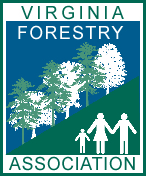Tree Information
Common Name: red spruce
Scientific Name: Picea rubens
Native/Naturalized: Native to Virginia
Database ID: 253
Status: alive
National Champion: yes
Virginia Champion: yes
Circumference: 136 in.
Height: 117 ft.
Crown: 37 ft.
Points: 262
Date Last Measured: 2024
Last Measured by: John Peterson and Eric Wiseman
Date First Measured: 2003
Comments:
2024 comments: Recognized again as national champion. Tree is still in good condition. Crown is full and dense. No indications that the forked leader is deteriorating or weak and no disturbance in the vicinity of the tree. The trunk measurement used for scoring here is the composite circumference of two stems. The narrowest girth of the fused stem, measured between the ground line and breast height, was 166". This measurement was taken 2' above ground at mid-slope. Each stem was also measured at 4.5' above ground at mid-slope: the east stem measured 104", and the west stem measured 87". The composite circumference of these two measurements is 136".
Declared national champion in 2019. This tree was found and measured by participants in the 2003 Youth Conservation Camp sponsored by the Virginia Soil and Water Conservation Districts.
It is a double-stemmed specimen. Inconclusive evidence as to whether this is a tree that arose from a single seed. The stems physically diverge from each other at about 2.5' above ground, but a bark inclusion seam is evident extending down to within 1' above ground. It is unusual that the seam runs down a buttress root. Bark inclusions usually are in the sinuses between buttress roots. Whether this is an indication of a single tree or two trees is unknown. It is possible that adjacent buttress roots of the adjacent stems converged and grafted, giving the outward appearance of a single buttress root below the seam.
If this is a tree that originated from a single seed, then the seedling must have been physically injured at a very young age, losing its terminal leader and thereafter two remaining lateral branches reoriented into codominant leaders. Injury to the terminal leader might have been sustained from storm damage, insect pests, vertebrate herbivores, or winter desiccation. Red spruce rarely if ever sprouts from stumps or reproduces vegetatively by layering, so that mechanism of codominant leader development is unlikely.
Evidence supporting the hypothesis of a damaged terminal leader resulting in codominant leaders is the fact that the leaders are of similar height and girth. One of the leaders is slightly smaller, but this could be due to diminished access to light or soil resources relative to its twin. However, this development of the two leaders could also be possible under the scenario of two seeds germinating next to each other during a brief span of years. The scenario of the leaders originating from two seeds is a simpler explanation for the growth habit observed today, although two trees persisting next to each other to reach such size occurs rarely.
When the tree was measured in 2013, the trunk circumference was measured below the trunk fork and just above the taper of the buttress roots, yielding a measurement of 165", which tallies with the height and crown spread shown to a score of 292 points. Individual measurements of each stem in 2020 at 4.5' above ground yielded measurements of 87" and 105", yielding a composite circumference of 136", which tallies with the height and crown spread shown to a score of 263 points. If only the larger stem girth was used in the score (105"), the score would be 232 points. Even this diminished score would rank the tree as the Virginia state champion (depending on whether or not the codominant leader was included in the crown spread measurement - if it's considered a separate tree, then perhaps not).
For purposes of the state register, the specimen is considered a single tree for now. However, the score has been revised downward using the composite trunk circumference measurement so that there is an equitable comparison with other red spruce measured at 4.5' above ground.
More Photos

Location of Tree
Tree is located in: Giles
Land Owner: U.S. Forest Service
GPS Coordinates: 37.392280, -80.494904
Directions: George Washington and Jefferson National Forests, Eastern Divide Ranger District, War Spur Loop Trail. On the north bank of an intermittent stream called War Spur Branch. Visible from the hiking trail called War Spur Loop. Some maps show the tree as several hundred feet from the trail. But the current configuration of the trail passes much closer. Best accessed by parking at the War Spur Loop Trailhead and hiking east on the trail. Easiest access is to veer left off of the trail as approach War Spur Branch and walk along the north embankment of the stream. Tree is best viewed from the trail on south side of stream, but it is difficult to cross the stream from this side. Only attempt to measure this tree during the dormant season. Terrain is rugged and understory vegetation is very dense, making it difficult to take accurate measurements.
Contact Information
Contact Name: Eric Wiseman
Contact Email: vabigtree@vt.edu
Contact Phone: 540-231-5148
Contact Info: John Peterson, jopeters@vt.edu
Nominators
Original Nominator(s): Jim Clark
Other Nominators: Youth Conservation Camp




